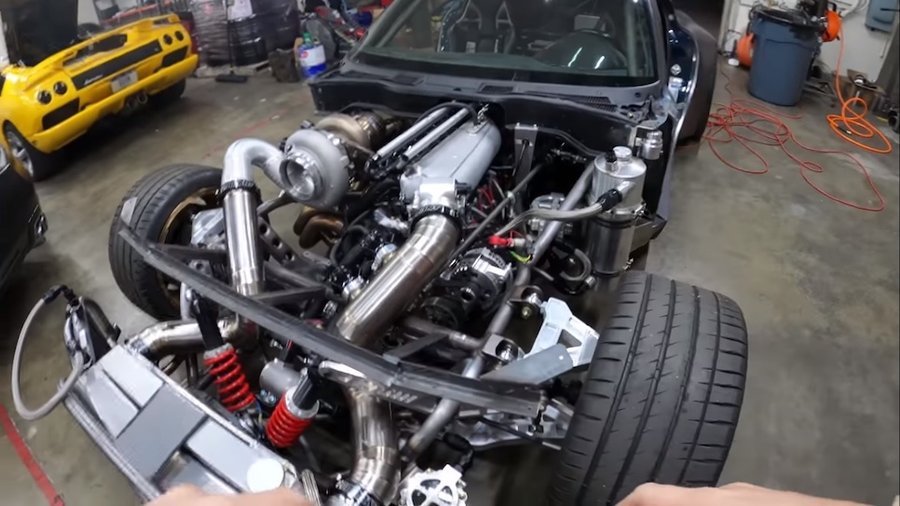AWD Mazda RX-7 With Four-Rotor Engine Finally Drives, It’s Still Unfinished

The YouTuber has been tinkering and tweaking the impossibly complex build since 2016, and at long last, the car moves under its own power.
"Wheels finally spin the same speed," commented Rob in the video's description, which goes to show that converting a rear-wheel-drive rotary car is a bit more complex than many would imagine. Even though "she's starting to become a real car," there's still a lot of work to be done to get the RX-7 up to snuff.
Project Ahura started off as a third-generation RX-7 – a.k.a. the FD – in Montego Blue. The twin-turbo and twin-rotor engine it had from the factory used to develop somewhere along the lines of 255 PS (252 horsepower) and 294 Nm (217 pound-feet) of torque from 1.3 liters of displacement. The four-rotor engine swap was commissioned from Precision Engineering in New Zealand, and at the time, building the powerplant from scratch totaled approximately $10,000.
If you were wondering, the budget for Project Ahura is a cool $250,000. Over $175,000 were spent as of February 2019 according to a video update from Rob's YouTube channel, all in the name of beating Mazda's rotary speed record at the Bonneville Salt Flats from more than 20 years ago. In 1995, an RX-7 with aero-crazy modifications managed to hit 242 miles per hour (389.46 km/h).
The 2.6-liter engine is matched to a straight-cut sequential transmission, namely the Hollinger RD-6 that requires a clutch to engage first gear. Up front, the differential from an E36 BMW M3 with helical pinion gears is complemented by another limited-slip diff at the rear axle from the M5. Oh, the turbo? That's a 98-millimeter Garrett that's capable of churning out 2,500 horsepower.
Rob doesn't plan on going to such extreme lengths. Pump gas should translate to 1,200 horsepower at the wheels while 100-octane race fuel is likely to enable 1,800 horsepower on the blacktop. The cantilevered suspension complete with adjustable coilovers is also worthy of mention, and even though it's not obvious, the wheel hubs come from the sixth generation of the Chevrolet Corvette ZR1.
Related News


